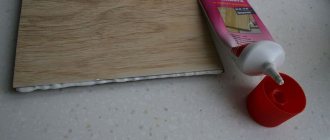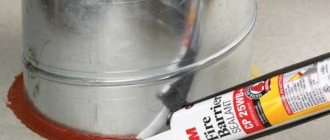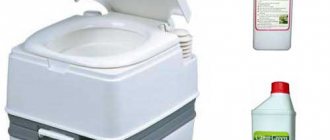Updated: 04/23/2021 15:30:06
Expert: Konstantin Borisovich Polyakov
*Review of the best according to the editors of expertology.ru. About the selection criteria. This material is subjective in nature, does not constitute advertising and does not serve as a purchase guide. Before purchasing, consultation with a specialist is required.
When performing finishing work in the bathroom, you cannot do without a material such as sealant. Using this product, seams between tiles are sealed, joints between plumbing fixtures and walls are insulated, decorative skirting boards are attached, etc. The need to fill voids with sealant is explained not only by aesthetics, but also by the need to protect the surface from moisture and microorganisms. Today there is a large assortment of specialized formulations on sale from different manufacturers. When choosing the best bathtub sealant, there are a few important things to consider.
Criteria for choosing a bathtub sealant
- The bathroom or shower creates excellent conditions for the emergence and proliferation of microorganisms. High humidity and warm air promote the development of fungi, mold and other biological formations. Therefore, the composition must become a reliable barrier for microorganisms.
- For many finishing craftsmen, the most important property of a sealant is simplicity and ease of application. Viscous gel-like materials that completely fill any voids deserve special praise.
- A very unpleasant moment for owners of houses and apartments will be a violation of the integrity of the insulation (cracking, peeling). To restore the attractiveness of the cladding, you have to clean the tile joints and apply a new compound. Therefore, after drying, the seam must be elastic, durable and firmly adhere to the surface.
- In country houses where there is no heating in winter, the bathroom should be finished with frost-resistant materials. The sealant should have the same property.
Our review includes the best bathtub sealants. When compiling the rating, the following criteria were taken into account:
- ease of use;
- resistance to biological damage;
- price;
- expert opinion;
- consumer reviews.
Table of advantages and disadvantages of different types of bathtub sealants
| Types of sealants | Advantages | Flaws |
| Acrylic | + low price + moisture resistance and resistance to temperature changes + can be painted + excellent adhesion to different materials | - insulation is not elastic — hardens for a long time (24 hours) - not all products are suitable for the bath |
| Sanitary | + high resistance to biodestruction + wide scope of application + good adhesion + minimal shrinkage | - pungent odor lasts for a long time - high price |
| Silicone | + affordable price + resistance to water, temperature changes, ultraviolet rays + wide range of colors + also suitable for outdoor use | - cannot be painted — insufficient adhesion to polymeric materials. |
| Polyurethane | + fast hardening + can be used as an adhesive + elastic and durable insulation + can be coated with paint or varnish | - high price - poses a danger to the health of the finisher during work |
Rating of the best bath sealants
| Nomination | place | Name of product | price |
| The best acrylic sealants | 1 | Ceresit CS 7 | 290 ₽ |
| 2 | Moment Germent | 449 ₽ | |
| The best sanitary sealants | 1 | MAKROFLEX SX101 | 252 ₽ |
| 2 | Tangit SPECIAL S400 | 189 ₽ | |
| 3 | Belinka Belsil Sanitary Acetate | 216 ₽ | |
| The best silicone sealants | 1 | CIKI FIX universal | 120 ₽ |
| 2 | KRASS silicone universal | 199 ₽ | |
| 3 | Ceresit CS 25 | 290 ₽ | |
| The best polyurethane sealants | 1 | Tytan Power Flex | 480 ₽ |
| 2 | Rubberflex PRO PU 25 | 298 ₽ |
Which composition to choose?
When choosing a sealant, you need to take into account the characteristics of the room or sealing conditions.
Suitable for sealing seams on the street side:
- acrylic sealants;
- thiokol or polyurethane solutions, if cracks are sealed in the cold season or in rainy weather;
- acrylate composition "Stiz A".
The influence of the external environment on the sealant indoors is much less, and the requirements for the aesthetics of the seam are higher. For interior work the following are most often used:
- white silicone sealant (it is better to prefer a neutral type);
- liquid plastic;
- polyurethane sealant;
- acrylate composition "Stiz B".
Butyl sealant is suitable for sealing the window blocks themselves and sealing cracks in double-glazed windows.
Mr. Build recommends: when choosing, focus on products from well-known brands. There are a lot of low-quality compounds on the market from unscrupulous manufacturers.
High-quality sealed seams will ensure comfort in the room and will not spoil the appearance of the window opening. To achieve this result, it is enough to choose the right sealing composition and carefully apply it.
The Best Acrylic Bath Sealants
Experts consider acrylic sealant to be one of the most convenient insulating materials to use. It perfectly fills voids between materials such as stone, ceramics, brick and concrete. The product allows you to reliably glue plastic skirting boards in the bathtub, as well as grout wide seams. The following compositions attracted the attention of experts.
Ceresit CS 7
Rating: 4.9
One of the most popular acrylic sealants in Russia is the composition of Ceresit CS 7. Experts also highly appreciated the capabilities of the material, giving it first place in the rating. Particularly noteworthy is the quality of the high elasticity of the seam after drying. The sealant goes well with different construction paints, so after drying the seam can be painted in your favorite color. Experts call the strengths of the material moisture resistance and resistance to temperature changes.
Beginners when working with Ceresit CS 7 acrylic sealant must follow the manufacturer’s recommendations. Particular attention should be paid to the thickness of the seam; too large a layer may crack after drying.
Advantages
- elastic seam;
- moisture resistance and resistance to temperature changes;
- painting of the seam is allowed;
- reliability and durability.
Flaws
- a thick seam may crack.
The Best Sanitary Bath Sealants
The most effective way to prevent biological damage in the bathroom is sanitary sealant. The product not only aesthetically creates seams and joints in the bathroom. It contains special fungicides that kill microorganisms. Here are some reliable sanitary bathtub sealants.
MAKROFLEX SX101
Rating: 4.9
The sanitary sealant MAKROFLEX SX101 has the highest antiseptic qualities. The material deservedly became the winner of the rating; such properties as high adhesion, moisture resistance and resistance to temperature changes were highly praised. The composition is specially designed for filling voids in a bathhouse, shower or bathroom. The manufacturer has introduced special fungicides into the recipe that prevent the appearance of mold and fungi.
Users note the resistance of the formed seam to sunlight and ozone. Due to its frost resistance, the material can be used to seal refrigerators and freezers.
Advantages
- good adhesion;
- moisture resistance and resistance to temperature changes;
- effective antiseptics and fungicides;
- UV and ozone resistance.
Flaws
- specific smell.
What to do if mold returns
It happens that even after quality measures have been taken to get rid of mold and seal all joints and seams, the problem reappears. In this case, you will have to find a source of fungal growth, which, as a rule, is located under the tiles, in the deep layers of the seam, where the sealant did not get into, or other hard-to-reach places. In such a situation, you will have to completely clean the surface of the sealing material as follows:
- take a utility knife and carefully cut the silicone or acrylic on both sides of the seam;
- pick up the sealant and pull it out of the groove entirely, then immediately throw it away;
- clean debris, dirt, dust from the seam with a knife;
- disinfect the problem area with isopropyl alcohol or anti-mold compounds 2-3 times;
- let the joint dry (usually a day is enough);
- reapply sanitary sealant with anti-mold additives.
The Best Silicone Sealants for Bathtubs
Silicone sealants are available in acid or neutral base. Vinegar-smelling products can be used on a wide range of surfaces, with the exception of metal. The neutral composition is distinguished by its versatility of use, but its cost is higher. The following silicone materials are included in our rating.
CIKI FIX universal
Rating: 4.9
CIKI FIX universal silicone sealant has a death grip. The composition received such high praise from domestic cladding manufacturers. In terms of adhesion ability, the material surpasses all competitors. This factor became decisive in determining the winner of the rating. Such properties of the product as elasticity of the seam and moisture resistance did not escape the attention of experts. Even with frequent use of the shower or bath, the sealant does not wash out or crack.
The strengths of CIKI FIX are its resistance to temperature changes. The product is also tolerant of painted surfaces. But the lack of antifungal components in the composition requires constant ventilation of the bathroom.
Advantages
- increased adhesion;
- moisture resistance;
- elasticity;
- resistance to temperature changes.
Flaws
- poor resistance to biodestruction.
Question answer
How to store started sealant?
Always screw the spout on tightly. Silicone sealant hardens when exposed to atmospheric moisture. The tighter you twist it, the better.
How to get a “sausage” of the required thickness?
To do this, the dispenser spout is cut off in accordance with the dimensions of the cavity, gap or joint. It's always better to cut less. You can also get a thicker layer by slowly moving the tube so that more of the composition is squeezed out.
How to apply sealant evenly and beautifully?
To do this, use two strips of masking tape glued on both sides of the seam.
How to smooth silicone sealant without getting dirty?
The best tool is your finger, it will give you the most accurate sensations. To prevent the sealant from sticking, wet the skin with plain water.
The best polyurethane sealants for bathtubs
One of the most modern types of bathtub sealants are polyurethane-based compounds. The products do an excellent job of insulating joints in glass, wood, stone, concrete, and ceramics. The seam hardens quickly and is resistant to microorganisms, moisture and temperature changes. Experts singled out two products from the total mass.
Tytan Power Flex
Rating: 4.9
Polish polyurethane sealant Tytan Power Flex is a professional insulating material. Experts confirm flattering user reviews regarding high performance properties. The product deserves the highest level in our rating. Among the many positive qualities, experts highlight the elasticity and strength of the formed insulation layer. The sealant is equally good at filling tile joints or eliminating voids in plumbing fixtures.
There is one more feature of the composition; it can be used to restore old seams or joints. Thanks to reliable adhesion, durability and the possibility of painting, the consumer can fit the new panel into the interior of the bathroom at minimal cost.
Advantages
- high quality;
- elastic and durable seam;
- possibility of restoration of old connections;
- high adhesion.
Flaws
- high price.
Rubberflex PRO PU 25
Rating: 4.8
The one-component composition Rubberflex PRO PU 25 is not very well known in our country, although its qualities are worthy of attention. It’s not for nothing that experts gave this polyurethane sealant second place in the rating. Experts attribute the increased elasticity of the seam to the strengths of the product. After the layer dries, high-quality insulation is formed. The composition can be used when installing plumbing fixtures or for decorating tiled surfaces.
Users speak flatteringly about the product’s resistance to negative atmospheric conditions. The composition can be used both for interior work and for finishing external surfaces. To highlight the beauty of the interior, the insulation layer can be painted in a suitable color. If the seam is damaged, the integrity can be easily restored with the same sealant.
Advantages
- elastic seam;
- resistance to precipitation and sunlight;
- no shrinkage.
Flaws
- rarely on sale;
- high price.
The cost of an error due to poor-quality window installation seam
What happens if, in order to save money, the polyurethane foam is not isolated from contact with the external environment?
- After installation, excess foam is cut off, revealing its porous structure; the material begins to absorb moisture, like a sponge. Wet foam cannot perform its main function - thermal insulation. This means that the window will be ventilated.
- Freezing in winter, moisture in the pores of the foam begins to destroy it. Blowing through the installation seam leads to the appearance of ice on the windows, and the slopes become covered with mold.
Photo: mold on slopes is the result of improper execution of the installation seam
- Under the influence of ultraviolet radiation (sun), the foam quickly deteriorates on the outside and ceases to perform its protective functions.
Photo: sun, rain, steam destroy the installation seam
Therefore, according to GOST 30971-2012, when installing windows it is necessary to use special materials to protect the external and internal seam of the window. Insulating tapes and sealants are the most common materials permitted by GOST. Let's consider the advantages and disadvantages of each type of material for sealing the installation seam (window joint).











